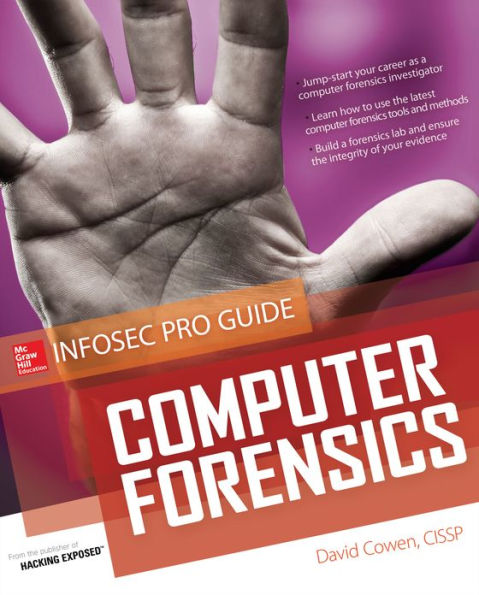Find out how to excel in the field of computer forensics investigations. Learn what it takes to transition from an IT professional to a computer forensic examiner in the private sector. Written by a Certified Information Systems Security Professional, Computer Forensics: InfoSec Pro Guide is filled with real-world case studies that demonstrate the concepts covered in the book.
You’ll learn how to set up a forensics lab, select hardware and software, choose forensic imaging procedures, test your tools, capture evidence from different sources, follow a sound investigative process, safely store evidence, and verify your findings. Best practices for documenting your results, preparing reports, and presenting evidence in court are also covered in this detailed resource.
Computer Forensics: InfoSec Pro Guide features:
- Lingo—Common security terms defined so that you’re in the know on the job
- IMHO—Frank and relevant opinions based on the author’s years of industry experience
- Budget Note—Tips for getting security technologies and processes into your organization’s budget
- In Actual Practice—Exceptions to the rules of security explained in real-world contexts
- Your Plan—Customizable checklists you can use on the job now
- Into Action—Tips on how, why, and when to apply new skills and techniques at work
Find out how to excel in the field of computer forensics investigations. Learn what it takes to transition from an IT professional to a computer forensic examiner in the private sector. Written by a Certified Information Systems Security Professional, Computer Forensics: InfoSec Pro Guide is filled with real-world case studies that demonstrate the concepts covered in the book.
You’ll learn how to set up a forensics lab, select hardware and software, choose forensic imaging procedures, test your tools, capture evidence from different sources, follow a sound investigative process, safely store evidence, and verify your findings. Best practices for documenting your results, preparing reports, and presenting evidence in court are also covered in this detailed resource.
Computer Forensics: InfoSec Pro Guide features:
- Lingo—Common security terms defined so that you’re in the know on the job
- IMHO—Frank and relevant opinions based on the author’s years of industry experience
- Budget Note—Tips for getting security technologies and processes into your organization’s budget
- In Actual Practice—Exceptions to the rules of security explained in real-world contexts
- Your Plan—Customizable checklists you can use on the job now
- Into Action—Tips on how, why, and when to apply new skills and techniques at work

Computer Forensics InfoSec Pro Guide
512
Computer Forensics InfoSec Pro Guide
512Related collections and offers

Product Details
| ISBN-13: | 9780071742467 |
|---|---|
| Publisher: | McGraw Hill LLC |
| Publication date: | 04/19/2013 |
| Series: | Beginner's Guide |
| Sold by: | Barnes & Noble |
| Format: | eBook |
| Pages: | 512 |
| File size: | 9 MB |
